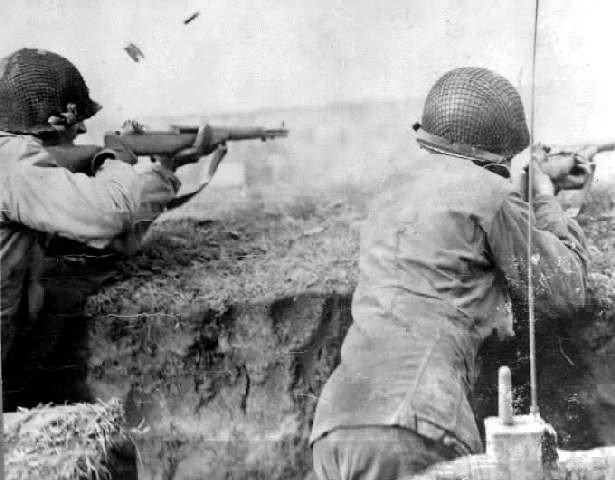RARE! WWII "CHOOSE YOUR BATTLE" Battlefield Recovered FIRED Rifle Bullet Casing with History Display Case




















RARE! WWII "CHOOSE YOUR BATTLE" Battlefield Recovered FIRED Rifle Bullet Casing with History Display Case
Comes with a hand-signed C.O.A. and a full historical research write-up
Display Size: 6 x 8 inches
Thanks to the overwhelming demand for our authentic "Piece of History" display collection, we are excited to introduce one of our BEST SELLER World War II battlefield excavated “FIRED” rifle bullet casing collections!
This incredible “Piece of History“ is professionally encased in a glass display case with plush padding and a tightly sealed display case. This display case is our LARGE size and measures a perfect 8 inches tall x 6 inches wide.
This series is a limited edition, meaning that each “Piece of History” WWII bullet casing display is unique and each casing may vary slightly from the display shown. These displays stand as a distinctive and invaluable addition to the collection of any history enthusiast.
______________________________
These preserved WWII battlefield-recovered bullet casings stand as a poignant relic, emblematic of the intense confrontation between American and German forces in the European Theater of World War II. Carefully preserved from specific battlefields across the European Theater of Operations (ETO), these bullet casings not only serve as tangible connections to history but also carry profound significance within their historical context.
When finalizing your purchase, please choose the battle site from which you want your preserved World War II “FIRED” bullet casing to be from.
TYPE #1: Normandy, France:
The beaches of Normandy, France, etched in history as the site of the Allied invasion on June 6, 1944, marked a pivotal turning point in World War II. Operation Overlord, famously known as D-Day, involved an immense logistical effort and coordination among Allied forces. The landings took place across five beaches: Utah, Omaha, Gold, Juno, and Sword.
Utah Beach, situated on the westernmost flank, was assaulted by the U.S. 4th Infantry Division, while Omaha Beach, the most heavily fortified, saw fierce fighting as American forces struggled against German defenses. Gold Beach, targeted by British troops, faced challenges from coastal obstacles and strong German resistance. Juno Beach, assigned to Canadian forces, encountered intense opposition but ultimately succeeded in establishing a foothold. Finally, Sword Beach, assaulted by British troops, faced lighter resistance compared to its counterparts.
The Battle of Normandy, following the D-Day landings, saw intense fighting as Allied forces pushed inland, facing stiff German resistance. The liberation of key cities such as Caen and the subsequent breakout from the beachheads marked significant milestones. The Battle of Normandy lasted until late August 1944, with the Allies securing a crucial foothold in Western Europe, paving the way for the eventual defeat of Nazi Germany.
TYPE #2: Bastogne, Belgium:
Bastogne, a small town in Belgium, gained prominence during the Battle of the Bulge, the last major German offensive campaign on the Western Front. In December 1944, German forces launched a surprise attack through the Ardennes Forest, aiming to split Allied lines and recapture the vital Belgian port of Antwerp.
The town of Bastogne, defended primarily by the U.S. 101st Airborne Division, became a focal point of the German assault. Despite being outnumbered and surrounded, the American defenders, under the command of General Anthony McAuliffe, refused to surrender, famously replying "Nuts!" to a German surrender demand.
The Battle of Bastogne raged for several days, with the town subjected to relentless shelling and determined German attacks. Despite harsh winter conditions and dwindling supplies, the American forces held out until reinforcements arrived, relieving the siege and turning the tide against the German offensive. The defense of Bastogne stands as a testament to the courage and resilience of Allied troops in the face of overwhelming odds.
TYPE #3: Aachen, Germany:
Aachen, a historic city in western Germany, was the site of the first major urban fighting on German soil during World War II. In October 1944, Allied forces launched Operation Market Garden, an ambitious plan to seize key bridges and establish a route into Germany. As part of the broader campaign, Aachen became a strategic objective due to its location near the German border.
The Battle of Aachen, fought primarily by American forces, proved to be a challenging urban combat operation. German defenders, entrenched within the city's medieval fortifications, fiercely resisted Allied advances. Street-to-street fighting and close-quarters combat characterized the intense struggle for control of the city.
Despite heavy casualties and fierce resistance, Allied forces eventually captured Aachen in late October 1944, marking a significant milestone in the campaign to penetrate German territory. However, the battle highlighted the difficulty and complexity of urban warfare, foreshadowing the challenges that lay ahead as Allied forces advanced deeper into Germany.
TYPE #4: Nijmegen, Netherlands:
Nijmegen, a Dutch city near the German border, played a crucial role in Operation Market Garden, the Allied attempt to secure a bridgehead over the Rhine River and advance into Germany. As part of the operation, British and American airborne troops were tasked with capturing key bridges, including the ones spanning the Waal River near Nijmegen.
The Battle of Nijmegen, fought in September 1944, witnessed intense fighting as Allied paratroopers struggled to secure the bridges amidst determined German resistance. The Waal River crossing, in particular, proved to be a formidable obstacle, with American troops executing a daring daylight river assault under heavy enemy fire to secure the bridge.
Despite initial setbacks and heavy casualties, Allied forces eventually succeeded in securing the bridges at Nijmegen, paving the way for the ground advance towards Arnhem, the ultimate objective of Operation Market Garden. However, the campaign ultimately fell short of its goals, highlighting the challenges of large-scale airborne operations and the formidable defense mounted by German forces.